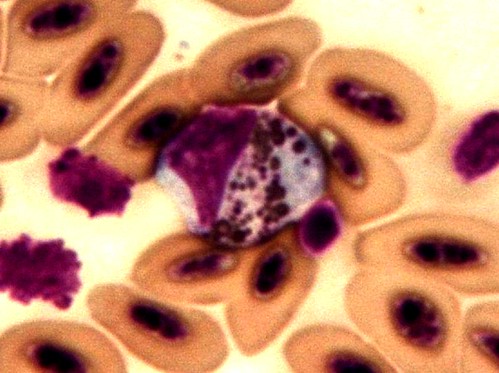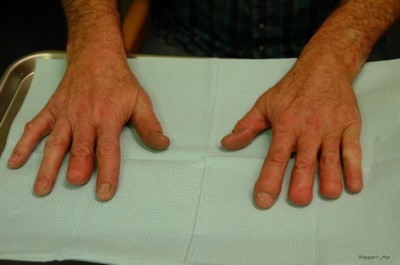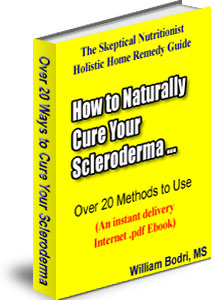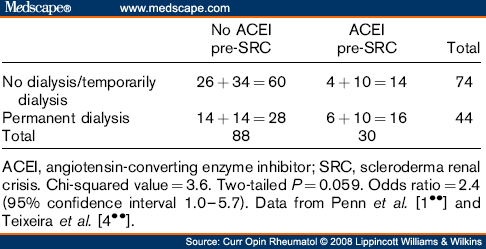
Low dose naltrexone has recently garnered attention as a possible treatment for autoimmune diseases, neurological conditions, cancer and some other illnesses. Naltrexone is an opiate antagonist, which means that it blocks opioid receptors in the brain and thus eliminates the feeling of pleasure caused by e.g. drinking alcohol, because our endogenous opioids (endorphins) cannot bind to the receptors. But when used in very small doses (less than 1/10 of the normal dose) naltrexone can be used to stimulate the release of endorphins.
History
Low dose naltrexone was pioneered by the neurologist Bernard Bihari in the early 1980s, when he was studying medications used for drug and alcohol withdrawal. He noticed that very small doses of naltrexone (initially 3 mg) taken at bedtime only blocked the opioid receptors transiently, which stimulated the body to produce more of its endogenous opioids and produced no significant side effects.
Bihari tried LDN as a treatment for HIV/AIDS and multiple sclerosis, two conditions that have been shown to be associated with low levels of beta endorphin, one of the most important endogenous opioids. In some of his AIDS patients the blood levels of beta endorphin as much as tripled when using low dose naltrexone.
Patients also experienced marked clinical improvement. The MS symptoms (especially fatigue) were relieved and the illness progression seemed to halt. Most patients never experienced a single MS attack after the initiation of low dose naltrexone. Patients infected with HIV had their viral counts drop radically and their CD4 counts subsequently went up. As a result the rates opportunistic infections and AIDS related malignancies decreased.
Later development
Encouraged by his success Bihari and other doctors began trying LDN for other conditions, such as other autoimmune illnesses and cancer, often with great results. The support from the patient community has been overwhelming. Patients with MS have collected money for clinical trials and there have even been three conferences on LDN and the fourth one is scheduled for October 2008.
A study published in the American Journal of Gastroenterology found that 89% of patients with Crohn's disease were improved on LDN and 67% achieved a full remission. There are clinical trials currently running for multiple sclerosis, Crohn's disease, autism, fibromyalgia, pancreatic cancer and squamous cell carcinoma of the head and neck (head and neck cancer). A large HIV/AIDS study is also running in Mali, West Africa.
Illnesses that can be treated with LDN
LDN has been successfully used to treat the following conditions:
Autoimmune diseases
- multiple sclerosis
- systemic lupus erythematosus (SLE/LED)
- rheumatoid arthritis
- ankylosing spondylitis
- pemphigoid
- sarcoidosis
- scleroderma
- Crohn's disease
- ulcerative colitis
- celiac disease
- psoriasis and psoriatic arthritis
- Wegener's granulomatosis
- transverse myelitis
Cancers
- bladder cancer
- breast cancer
- carcinoid tumor
- colorectal cancer
- glioblastoma
- liver cancer
- non-small cell lung cancer (NSLC)
- chronic lymphocytic leukemia
- lymphoma (both Hodgkin's and non-Hodgkin's)
- melanoma
- multiple myeloma
- neuroblastoma
- ovarian cancer
- pancreatic cancer
- prostate cancer
- renal cell carcinoma
- throat cancer
- uterine cancer
Other illnesses
- HIV/AIDS
- hepatitis C
- amyotrophic lateral sclerosis (ALS)/primary lateral sclerosis (PLS)
- autism
- Alzheimer's disease
- Parkinson's disease
- Behcet's disease
- chronic obstructive pulmonary disease (COPD, emphysema)
- endometriosis
- fibromyalgia
- chronic fatigue syndrome/myalgic encephalomyelitis (CFS/ME)
- irritated bowel syndrome (IBS)
LDN may possibly also work for e.g. myasthenia gravis, antiphospholipid syndrome/Hughes syndrome, narcolepsy (a possibly autoimmune condition), interstitial cystitis, chronic Lyme disease/post Lyme syndrome, acne, rosacea, chronic urticaria, dementia, obsessive-compulsive disorder (OCD), cluster headaches, schizophrenia and post-traumatic stress disorder (PTSD). It has been reported to be helpful in insomnia and migraine prevention.
Mode of action
Endorphins are often associated with the pleasant feeling we get from e.g. exercise, but they are more than just that. Beta endorphin and met enkephalin, another opioid peptide produced by the body have profound effects on the immune system. Numerous animal studies have demonstrated that met enkephalin acts as an anti-cancer agent. Beta endorphin levels have shown to be low in HIV/AIDS, many autoimmune conditions and e.g. migraine.
Autoimmune illnesses have been traditionally seen as manifestations of an overactive immune system and are usually treated with immunosuppressants, but more and more data is emerging that suggests that autoimmune conditions may in fact be forms of immunedeficiency, explaining why LDN, an immunostimulant, works for them.
Clinical effects
In most autoimmune diseases the disease progression halts. Symptoms, such as fatigue, pain, muscle weakness and cognitive problems are often alleviated, as well. In degenerative conditions like ALS and Alzheimer's the illness progression is slowed down. The lipodystrophy caused by antiretroviral (HIV) drugs usually improves significantly.
Bihari reports that a halt in cancer growth occurs in about 50% of the cancer patients he treats. Some of these patients show objective signs of tumor shrinkage. Some patients who have been deemed terminal with little time left are still alive and doing well years later, such as one with pancreatic cancer (one of the deadliest cancers) whose case was published in Integrative Cancer Therapies.
According to Bihari LDN works best for the following cancers: multiple myeloma, Hodgkin's disease, breast cancer, cancers of the gastrointestinal tract (including the pancreas) and non-small cell lung cancer. That isn't to say that cancer patients should ditch their existing treatments, but LDN can be combined with chemotherapy and radiotherapy. Some patients only undergo surgery or are considered not to benefit from conventional treatment, so they would be good candidates for LDN.
How it is used
LDN is taken every night between 9 PM and 3 AM, as the body produces most of its endorphins during the early morning hours. There are usually no side effects. Some people experience problems with sleeping during the first week. Nausea, feeling "high", gas and bloating and hunger pangs may occur in the beginning and usually go away in a few days. In patients with MS spasticity may transiently worsen. It may take anywhere between a day and a few months to notice improvement.
LDN can safely be taken with all other medications, foods or supplements, but because it is an opiate antagonist it cannot be combined with any narcotic painkillers (opiates), including tramadol, and taking it with immunosuppressive drugs (like corticosteroids) may cause the drugs to "cancel out" each other's effects, as LDN is an immunostimulant. The only contraindication is a past organ transplant, because taking an immunostimulant might lead to graft rejection.
Any doctor can prescribe LDN as an "ex tempore" prescription, to be filled by a compounding pharmacy. Some people use foreign pharmacies, as it is legal in most countries to order medications from abroad with a valid prescription. LDN may be formulated as capsules or liquid, but the liquid has to be refrigerated and is less convenient when traveling. It is recommended that calcium carbonate is not used as a filler for tablets.
The recommended dose is 4.5 mg, but some people, especially those who are very slim and those with severe MS, only take 3 mg. Often prescriptions are written for 1.5 mg capsules so that the patient can try taking either two or three at once. LDN is also relatively inexpensive, usually costing between $15 and $40 a month.
Maija Haavisto is a journalist, medical writer and the author of the most comprehensive book published about treatments for chronic fatigue syndrome/myalgic encephalomyelitis, fibromyalgia and related conditions. "Reviving the Broken Marionette: Treatments for CFS/ME and Fibromyalgia" features more than 250 different medications that can be used to treat these debilitating illnesses.
Article Source: http://EzineArticles.com/?expert=Maija_Haavisto
http://EzineArticles.com/?Revolutionary-Treatment-Gives-Hope-For-the-Chronically-Ill&id=1281408





















